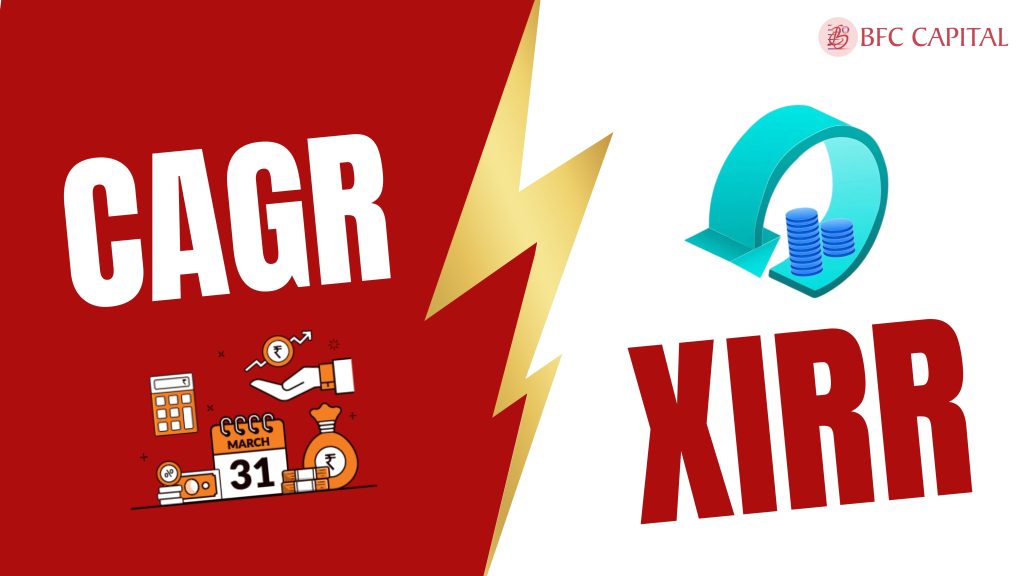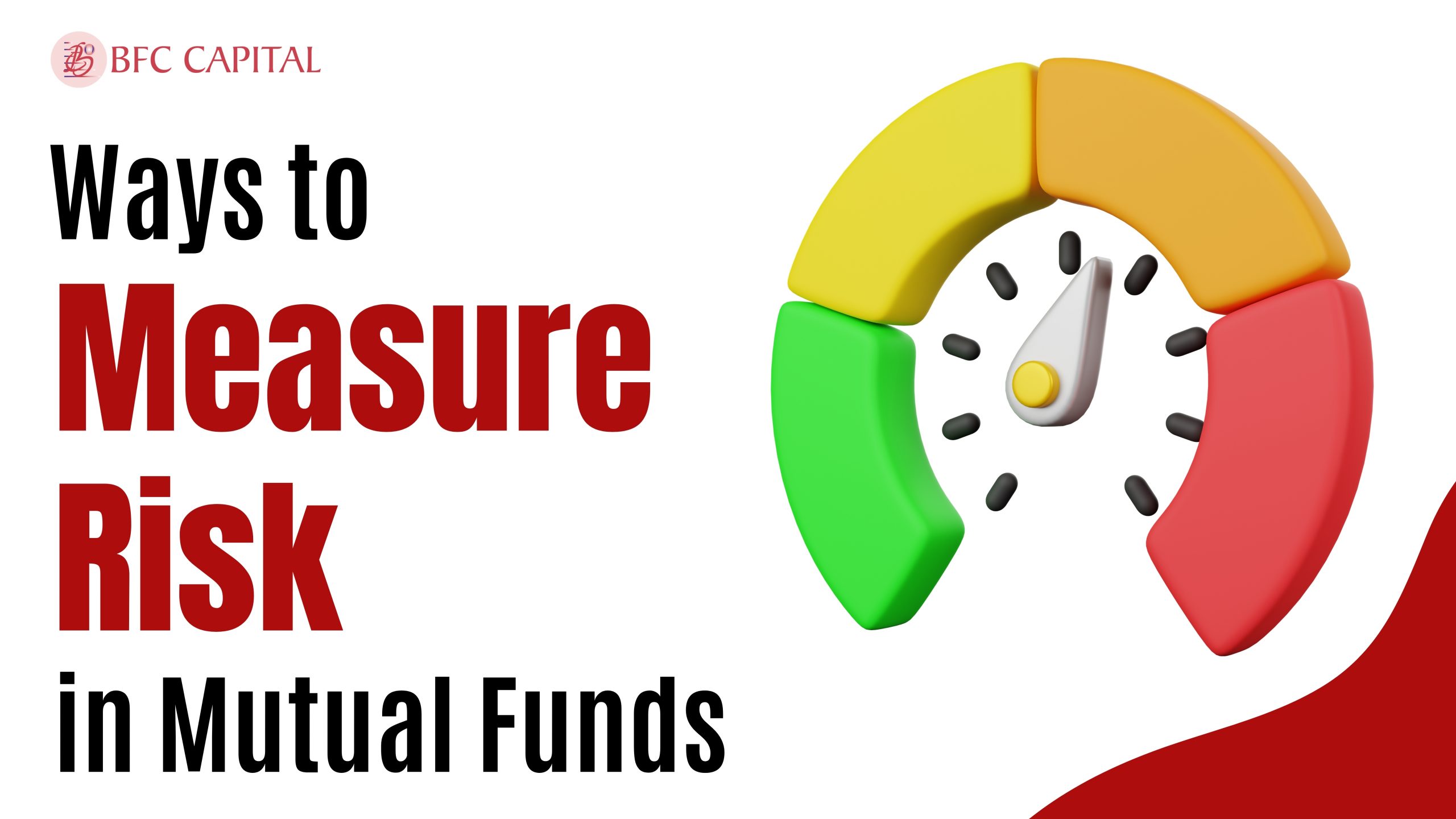
You are on a road trip navigating through sharp turns on the road and natural scenery. You need to keep track of the distance and time to reach your destination. You use a speedometer and GPS to calculate the variables of your journey, right? In the investment world, you use specific metrics to assess your investments – CAGR and XIRR. Your destination signifies your financial goals, whereas the distance and time symbolize the returns on your mutual fund investments.
Mutual fund investments promise financial growth and a secure future to achieve your goals. In the financial world, every percentage point counts, and using the right tools makes all the difference.
This is why you need to assess your investments’ performance regularly and understand the same, as it is a key concern for every investor. The market offers different ways to assess the investments’ performance and the mutual fund scheme returns.
There are three most common ways to calculate your investment returns – Extended Internal Rate of Return (XIRR), Compound Annual Growth Rate (CAGR), and absolute returns. These metrics help understand how investors analyze their returns to measure how close they are to attaining their financial goals.
In this blog, we will attempt to learn the concept behind both these metrics and understand how they can help an investor like you make informed mutual fund investments. Whether you’re a seasoned investor or a newbie, exploring the differences between CAGR and XIRR can go a long way toward maximizing your returns and fulfilling your goals.
Table of Contents
What Do We Understand By CAGR, An Investment Returns Metric?
CAGR is Compound Annual Growth Rate (CAGR) i.e., a significant financial metric that measures the annual growth rate of your investments over a given period that lasts more than a year. This is because you reinvest your gains at the end of each year.
Even with different fluctuations and the impact of volatility in returns, the final tally evens them out over the investment horizon to reach a singular number. And, offers you a much simpler view of your investment’s performance, making it easier to compare investments or assess an asset’s performance over a specific period.
If you compare various mutual funds, their CAGRs help you see which investments are performing better while also projecting possible future returns based on past performance.
Unraveling the Complex Threads of How CAGR is Calculated
Assume that you have invested Rs. 50,000 in a tech company five years ago. Your investment grows to Rs. 70,000 at the end of this period.
The formula to calculate CAGR is – [Ending Value/Beginning Value]^1/n – 1
=> Hence, in the above scenario, CAGR is = [70,000/50,000]⅕ – 1
= 1.0696 – 1
= 0.0696 which is 6.96%
As shown above, your investment in the tech company grew at an average annual growth rate of 6.96% over the five years.
Additionally, imagine that you start keeping a piggy bank with 100 coins. You add coins to it every year, but the number of coins you add changes.
You add 20 extra coins in the initial year of the investment, so you have 120 coins at the given moment. In the second year of keeping the piggy bank, you add 30 more coins, so you have 150 coins in total. And so on, the number of coins you add changes every year.
After five years, you have 200 coins in total in the piggy bank. The CAGR is the average number of coins added to your piggy bank each year if you had ended up adding the same number of coins every year for five years to end up with 200 coins as well.
So, the point of doing this is to understand that even if you had added the same number of coins every year (for example, 10 coins), and you had 200 coins every year, the CAGR is the number of coins you added every year (whether they remain 10 or not).
This allows you to compare how fast your piggy bank grows compared to the other kids even if they had started with or added a different number of coins each year. CAGR smoothens the bump of how many coins you added (albeit different) to give you one simple number, which is the average growth rate of your piggy over time.
Understanding XIRR: A Complex Financial Metric To Calculate Your Returns
XIRR is the extended internal rate of return that considers cash flows as well. It is useful if you have made multiple investments of different amounts during different intervals.
XIRR metric will provide you with a single return rate for the transactions given your different investments.
Assume that you are a gardener planting different types of flowers in the garden over several months. Every type of flower signifies a different investment and the time that you plant them also corresponds to when you make cash flows i.e., investments or withdrawals.
For your initial investment on 1st January, you plant a rose brush i.e., invest Rs. 10,000 in market terms. On 1st February, you invest Rs 5,000 (plant tulips), and Rs. 7,000 (plant daisies) on 1st March. But, on 1st April, you sell some of the tulips and sell them for Rs. 3,000 – the withdrawal.
As the outcome, by 1st June, you have nurtured your plants – now you have a total of Rs. 22, 000 worth of flowers with you.
In market terms, the initial investment and other subsequent investments signify cash outflows i.e., the money that is spent on planting. The withdrawal is the money received from selling flowers. The final value of the garden is Rs. 22,000 is the total return on investments.
The overall growth rate of your garden considers the different planting times and amounts. Just as each flower will grow at its own pace depending on when it was planted and how well it was cared for, each cash flow will grow according to when the investment was made.
Which Is Better? : The Differences Between CAGR and XIRR
These financial metrics are quite complicated to understand, but a simpler understanding of them can help you assess the returns on your mutual fund investments more simply. Hence, we will now focus on the differences between them and attempt to study why both these metrics are necessary.
- CAGR measures the return rate based on the initial and final investment value, whereas, XIRR calculates the return by taking into account the cash flows along with the investments.
- CAGR is ideal for consistently-made investments, whereas, XIRR calculates returns for irregular cash flows.
- The investments for CAGR should have a fixed investment amount, while for XIRR is more suitable for multiple cash inflows and outflows.
- CAGR might be less accurate as it does not take into account the time and value of the cash flows, meanwhile, XIRR is more accurate in providing results given it factors in the timing and value of cash flows.
The Bottom Line
It is always crucial to understand the fundamentals of mutual fund returns to make informed investment decisions. Methods of calculating return rates such as CAGR and XIRR offer a wider view of the performance of your investments. Each method carries valuable insights and accuracy when it comes to helping you analyze how effectively your investment strategies are working.
Please share your thoughts on this post by leaving a reply in the comments section. Also, check out our recent post on: “What is the 80-20 Rule for Investing in Mutual Funds?“
To learn more about mutual funds, contact us via Phone, WhatsApp, Email, or visit our Website. Additionally, you can download the Prodigy Pro app to start investing today!
Disclaimer – This article is for educational purposes only and by no means intends to substitute expert guidance. Mutual fund investments are subject to market risks. Please read the scheme-related document carefully before investing.

Assistant Vice President – Research & Analysis
Akash Gupta heads the Research & Analysis department at BFC CAPITAL, where he combines in-depth market insights with strategic analysis. He holds multiple certifications, including:
- NISM-Series-XIII: Common Derivatives Certification
- NISM-Series-VIII: Equity Derivatives Certification
- NISM-Series-XXI-A: Portfolio Management Services Certification
- IRDAI Certification
With his expertise in equity, derivatives, and portfolio management, Akash plays a key role in providing research-backed strategies and actionable insights to help clients navigate the investment landscape.








Name: Balance Sheet: Meaning, Types, Components & Importance
says:[…] Please share your thoughts on this post by leaving a reply in the comments section. Also, check out our recent post on: “CAGR vs XIRR – Calculate Mutual Fund Returns“ […]